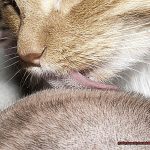Siamese cats are more than just a pretty face. With their sleek appearance and distinctive personality, they’ve captured the hearts of cat lovers worldwide. But if you’re lucky enough to share your life with one of these fascinating felines, there’s much more to know beyond their playful, curious nature and characteristic vocalizations.
In this blog post, we’ll take a deep dive into the world of Siamese cats. From their regal history in Thailand to their unique coat patterns and health concerns, we’ll cover all the essential details that every Siamese cat owner should be aware of.
Whether you’re a first-time cat owner or a seasoned pro, there’s always something new to discover about these fantastic felines. So, sit back and get ready for a crash course on everything you ever wanted to know about your Siamese cat – and maybe even a few things you didn’t.
Personality of Siamese Cats
Siamese cats are undeniably distinct from other cat breeds, with their vocalization, sociability, loyalty, and playfulness setting them apart.
One of the most striking traits of Siamese cats is their vocalization. They are incredibly expressive and have a vast array of sounds they use to communicate with their owners. Siamese cats are known to be very talkative and will often follow their owners around the house, meowing to get their attention. This makes them fantastic companions for those who love interactive pets.
Siamese cats adore attention from their owners and form strong bonds with them. They crave being close to their humans and enjoy playing interactive games and toys, which makes them excellent companions for families with children. However, they can be demanding and stubborn at times, which necessitates early boundary-setting and mental stimulation.
Apart from their unique personality traits, Siamese cats have specific dietary requirements that need consideration by their owners. They require high-quality cat food that meets their particular dietary needs. Additionally, they are prone to certain health issues such as respiratory problems and dental issues, making it necessary for Siamese cats to receive regular check-ups from a veterinarian.
In terms of grooming, Siamese cats have short, fine fur that requires minimal maintenance. However, they do shed regularly and may require occasional brushing to keep their coat looking healthy and shiny. Maintaining a clean environment is also vital for their overall well-being.
Providing a stimulating environment is critical for the happiness and health of Siamese cats. They are intelligent and curious animals who enjoy exploring their surroundings. Offering them a variety of toys and play structures can help keep them happy and healthy.
Health Issues of Siamese Cats
Siamese cats are a remarkable breed, admired for their stunning appearance and unique personalities. However, as with any animal, they can be prone to certain health issues that owners need to be aware of. As an expert in the field, I’m here to provide you with essential information on the health concerns of Siamese cats.
One of the most common health problems Siamese cats face is respiratory issues, such as asthma. Due to their narrow airways, these felines have a higher risk of breathing difficulties and distress. Vigilance is key, and pet owners must monitor their cat’s breathing and seek veterinary care immediately if there are any signs of respiratory distress.
Dental problems are also prevalent in Siamese cats. They are more prone to periodontal disease, which can lead to tooth loss and difficulty eating. Regular dental check-ups and cleanings are crucial for preventing these issues.
Genetic disorders such as amyloidosis and progressive retinal atrophy are additional concerns for Siamese cats. Amyloidosis affects the liver and kidneys while progressive retinal atrophy causes vision loss over time. It’s important to work with a reputable breeder who screens for these disorders before adopting a Siamese cat.
In addition to these genetic concerns, Siamese cats may also face urinary tract problems, obesity, and skin allergies. Regular visits to the veterinarian and a healthy diet can help prevent or manage these issues.
Diet for Siamese Cats
Siamese cats are known for their striking blue eyes, slender bodies, and energetic personalities, which means they require a balanced diet to maintain their health and energy levels.
To start, feeding your Siamese cat high-quality protein is essential. Real meat should be the first ingredient in their cat food to provide the necessary amino acids to maintain muscle mass and overall health. Additionally, Siamese cats require essential fatty acids, vitamins, and minerals that can be found in cat food specifically formulated for their breed.
It’s important to note that Siamese cats have a higher metabolism rate than other breeds and need more calories per day. Check the recommended daily caloric intake for your cat’s weight and age to ensure they are getting enough nutrients.
When selecting cat food for your Siamese cat, read the labels carefully. Avoid fillers such as corn or wheat gluten, which can cause digestive issues. Artificial preservatives and flavors should also be avoided whenever possible.
Feeding your Siamese cat wet food in addition to dry kibble is also beneficial. Wet food provides additional hydration and can be a source of protein. However, do not replace dry kibble entirely with wet food. A combination of both is recommended to maintain a healthy balance of nutrients.
Grooming Requirements for Siamese Cats
Siamese cats are known for their sleek, shiny coat and stunning blue eyes. Fortunately, grooming these elegant felines is relatively low-maintenance compared to other cat breeds. However, regular grooming is still essential in keeping them healthy and looking their best. Here are some tips on grooming requirements for Siamese cats.
Bathing your Siamese cat every few months will help maintain their lustrous coat and keep them free of dirt and debris. Use a gentle cat shampoo and warm water, and be sure to rinse thoroughly to avoid leaving any soap residue on their coat. After the bath, make sure to dry your Siamese cat thoroughly to prevent them from getting chilled.
Nail trimming is another crucial part of grooming your Siamese cat. Long nails can cause discomfort when walking or scratching and may even lead to infections if they break or snag. Trim your cat’s nails every few weeks using a specialized cat nail clipper. Just make sure not to cut the quick, the pink part of the nail that contains blood vessels.
In addition to bathing and nail trimming, it’s also important to clean your Siamese cat’s ears and teeth regularly. Check their ears weekly for any signs of wax buildup or infection and gently clean them with a cotton ball moistened with a vet-approved ear cleaner. Brushing your cat’s teeth daily with a soft-bristled toothbrush and pet-safe toothpaste can help prevent dental problems such as tartar buildup and gum disease.
Stimulating Environment for Siamese Cats
Siamese cats are known for their energetic and intelligent personalities, which means that they require a stimulating environment to thrive. As an expert on Siamese cats, I can tell you that creating a fun and exciting atmosphere for your furry friend is essential to their physical and mental health.
To start, providing your Siamese cat with a variety of toys is crucial. Interactive toys such as puzzle toys or feeding toys will keep your cat entertained and mentally stimulated. It’s also important to switch up the toys every few weeks to keep things fresh for your curious cat.
In addition to toys, creating vertical spaces will give your Siamese cat a sense of adventure and excitement. Cat trees or shelves they can climb on will provide them with opportunities to jump and climb, which will help them burn off energy. This not only keeps them physically healthy but also helps them satisfy their natural instincts.
Furthermore, Siamese cats love to observe the world around them. Make sure your cat has access to windows or outdoor spaces where they can watch birds and other animals. This is a great way for your cat to stay entertained while getting some fresh air.
Finally, spending quality time playing with your Siamese cat is crucial for their overall well-being. They love playing fetch, chasing toys, and even learning tricks. This not only provides physical exercise but also strengthens the bond between you and your furry friend.
Veterinary Visits and Healthcare Costs for Siamese Cats
It’s vital to prioritize their well-being through regular veterinary visits and budgeting for healthcare costs, as Siamese cats are prone to certain health issues such as respiratory, dental, and gastrointestinal problems.
To keep your Siamese cat healthy, it’s crucial to schedule routine check-ups with your veterinarian at least once a year. This will help detect any potential health concerns early on and prevent them from developing into more significant problems down the line. Moreover, if you notice any changes in your cat’s behavior or physical health, don’t hesitate to schedule an appointment with your vet. Siamese cats are known for their expressive personalities, but they can also hide symptoms well, so it’s essential to stay vigilant.
As a responsible pet owner, it’s important to budget for healthcare costs for your Siamese cat. Depending on where you live and the type of services your cat requires, veterinary care costs can vary significantly. Routine check-ups can cost anywhere from $50-$150, while emergency procedures can cost upwards of $1,000 or more. That’s why it’s crucial to have an emergency fund set aside for unexpected veterinary expenses.
If you’re concerned about managing healthcare costs for your Siamese cat, consider investing in pet insurance. A reliable provider that covers pre-existing conditions can provide peace of mind knowing that your pet can receive the necessary care without breaking the bank.
Cat Toys and Play Structures for Siamese Cats
This is where cat toys and play structures come into play. Siamese cats are known for their active and curious nature, and providing them with appropriate toys and play structures can help keep them happy and healthy.
When it comes to cat toys, interactive options are a top choice for Siamese cats. Wand toys with feathers or strings are an excellent option as they mimic the movements of prey, encouraging your cat’s natural hunting instincts. Puzzle toys that dispense treats or hide toys inside can also provide mental stimulation and keep your Siamese cat entertained. It’s essential to note that selecting the right kind of toy is vital for your cat’s well-being. Pay attention to your cat’s preferences, such as soft plush or harder plastic toys.
Play structures, such as cat trees or scratching posts, provide an excellent outlet for your Siamese cat’s energy. These structures offer a place for your cat to scratch, climb, and rest, providing both physical exercise and mental stimulation. This is especially important for indoor cats who may not have access to the great outdoors.
It’s crucial to keep in mind your Siamese cat’s individual preferences when selecting toys and play structures. Consider the size of toys or structures, as well as any potential hazards such as small parts.
Training and Socialization for Siamese Cats
To ensure that your Siamese cat is happy and well-adjusted, it’s essential to start training and socializing them early on.
Training your Siamese cat can be a fun and rewarding experience for both you and your feline friend. These cats are great learners and can be taught to perform tricks and respond to commands using positive reinforcement techniques such as treats, praise, and playtime. Starting the training process when they are still kittens is ideal since they are easier to teach when they are young.
Socialization is equally important for Siamese cats. By exposing them to different people, animals, and environments, they become comfortable in all situations, which can help prevent behavioral problems such as aggression or shyness. Gradual introductions to other cats and exposure to new experiences such as car rides, walks on a leash, or visits to the vet or groomer can help make your Siamese cat confident and less fearful of new situations.
To socialize your Siamese cat with other cats, start by letting them sniff each other through a closed door. Then gradually increase their interaction until they are comfortable being around each other. It’s important to supervise their interactions initially to prevent any fights or injuries.
In addition to introducing them to other cats, exposing your Siamese cat to new experiences can help build their confidence. Car rides, walks on a leash, and visits to the vet or groomer can all be great ways to socialize your Siamese cat. By doing this, you’ll have a happier and more well-adjusted feline companion.
Conclusion
In conclusion, Siamese cats are captivating creatures with distinct personalities and specific requirements that every owner should be aware of. From their distinctive vocalizations to their dietary needs, grooming habits, and health concerns, there’s a lot to learn about these majestic felines.
Siamese cats are renowned for being chatty, gregarious, and playful companions who crave attention from their owners. They require high-quality cat food that meets their particular nutritional needs and are susceptible to certain health problems such as respiratory issues and dental troubles. Regular trips to the vet are vital for identifying any potential health problems early on.
Grooming Siamese cats is relatively low-maintenance compared to other breeds; however, it still necessitates regular bathing, nail trimming, ear cleaning, and teeth brushing. Providing an engaging environment through toys and play structures is critical for keeping them joyful and healthy.
Training and socialization are also crucial for Siamese cats to build confidence and prevent behavioral issues such as aggression or shyness. Starting early with positive reinforcement techniques can make training more manageable.
All in all, owning a Siamese cat can be an enriching experience with proper care and attention.







